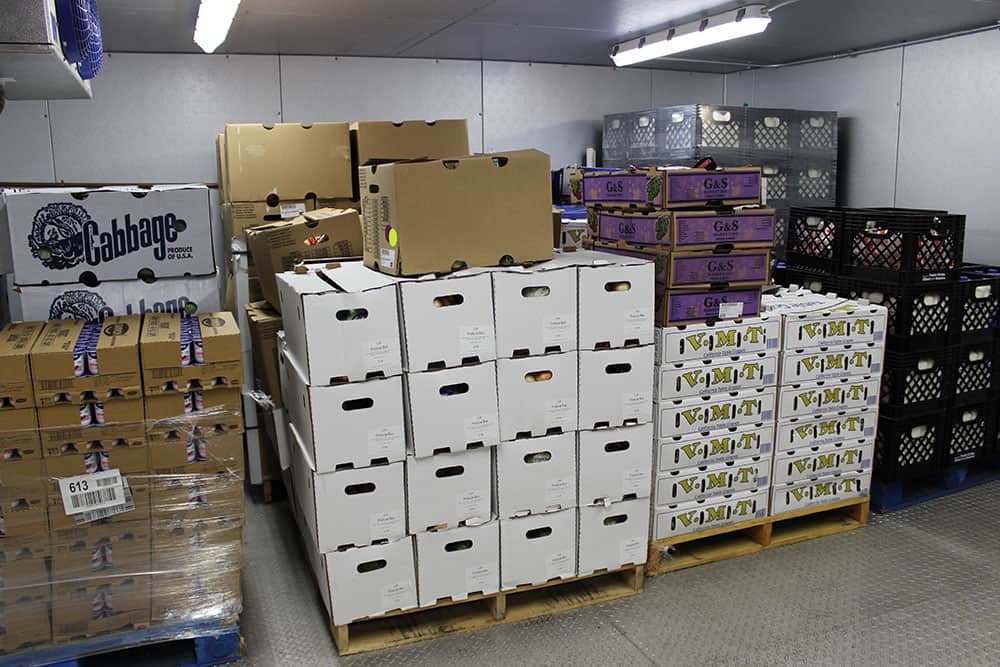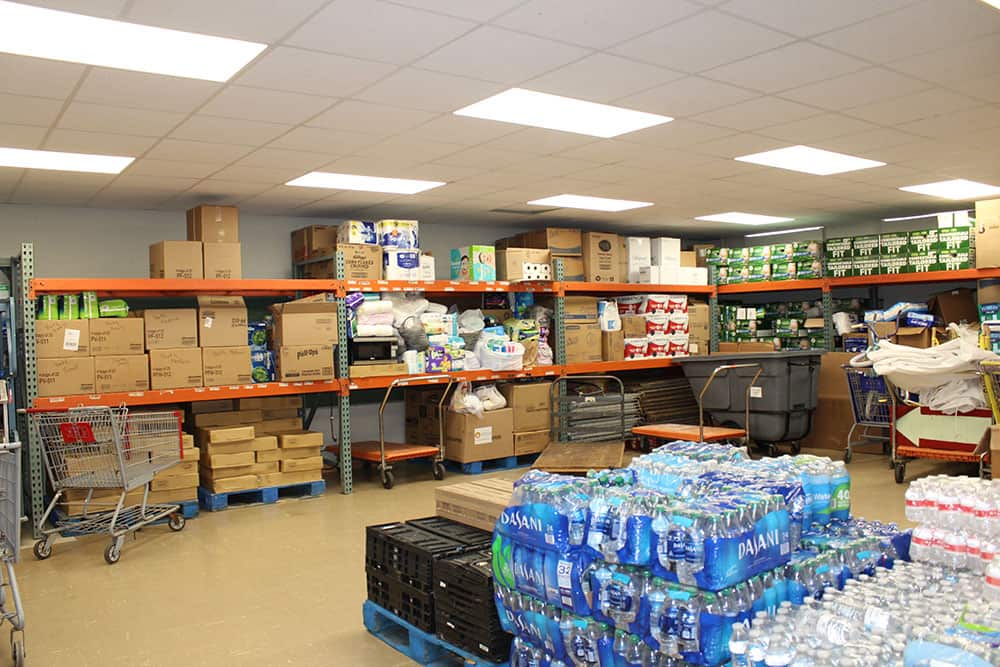St. Vincent de Paul-Holy Trinity Food Pantry Faces Challenges During Pandemic
By Michele Evans, Grants & Communications Director
The coronavirus pandemic is hitting nonprofit organizations hard and nearly all are adjusting the way they are serving their clients. The Society of St. Vincent de Paul Holy Trinity (SVDP-HT) Food Pantry in Bloomington is no exception.

In 2019, the food pantry moved into the remodeled former Holy Trinity Junior High School. The COVID-19 pandemic has forced the busiest food pantry in McLean County to move its weekly distribution outside into the parking lot, said Jim Tuite, co-president of St. Vincent de Paul Holy Trinity Conference. Clients in vehicles drive through the parking lot and volunteers load food into their trunks or place the food on a table for the clients to load themselves. All volunteers and clients are required to wear face masks to limit the spread of the virus.
In May, the food pantry was awarded a $2,000 grant from the IPCF COVID-19 Response Fund to purchase additional milk and dairy products so families with children would not be forced to ration those items to children. In addition, requests for toilet paper, personal hygiene products and laundry detergent have increased.
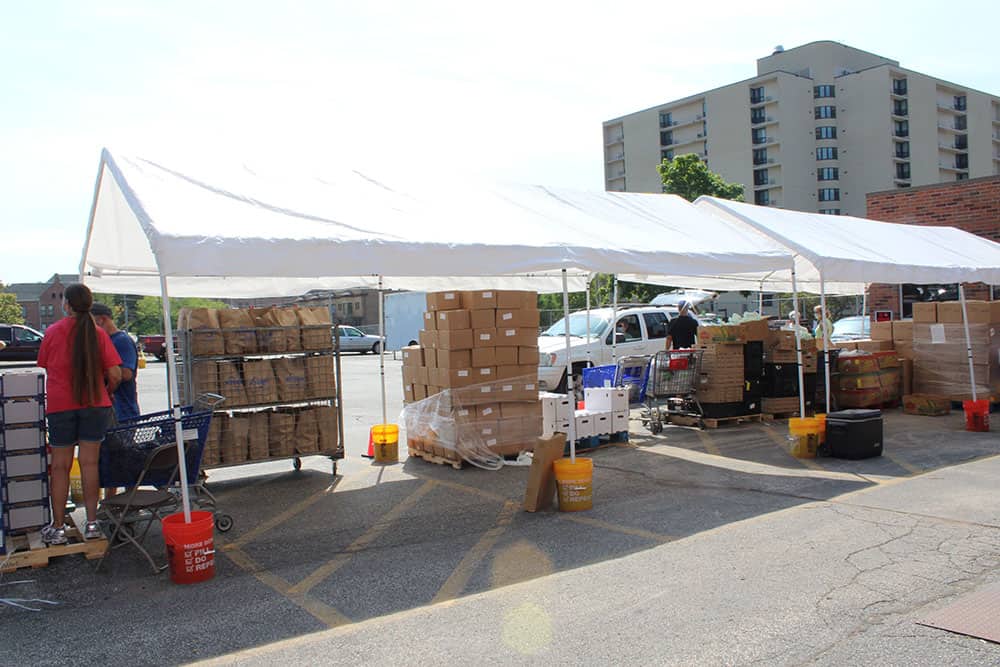
Despite challenges from COVID, the food pantry continues to support the community.
Each Monday from 8 a.m. to 2 p.m., the food pantry distributes meat, dairy products, produce and other nutritious food, plus personal hygiene products to 200-220 local families, said Dorothy Deany, co-president of conference. The numbers have remained stable throughout the pandemic, with as many as 280 families coming through one week in July.
Deany is proud that the pantry can provide fresh foods for families in need. “So many of these families are struggling with diabetes and weight issues,” she said, adding that St. Isidore’s Garden on property near the food pantry supplements the produce boxes provided by the USDA.
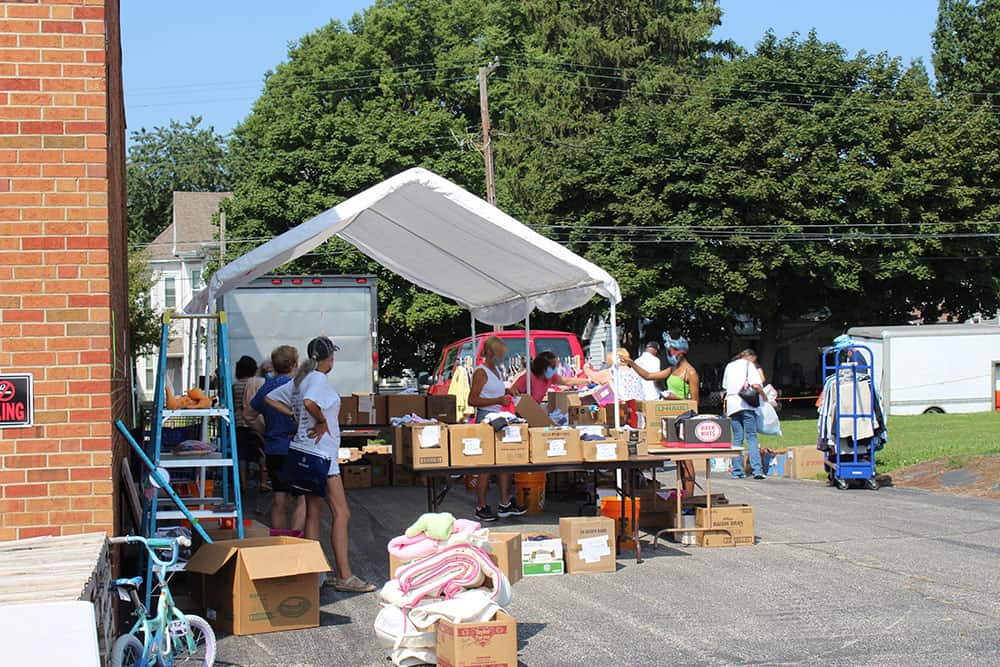
The clothing pantry, initially closed at the start of the pandemic, reopened in July, also outside the building along the north side of the building under a canopy structure. The clothing pantry is open from 10 a.m. – noon on Mondays.
Yet, Tuite is concerned about the future of the SVDP-HT Food Pantry. “Right now we’re maintaining, but with government officials unable to compromise on a new relief bill in Congress, we may see our numbers jump with more clients needing help to fill the gap left by lost government funding,” he said.
If need increases, the pantry will find itself in the position of having to purchase food products from local groceries. Tuite estimates the SVDO-HT Food Pantry has enough money on hand to last six months if forced to buy food in addition to that donated by other sources.
The food pantry has felt the impact of COVID in other ways too.
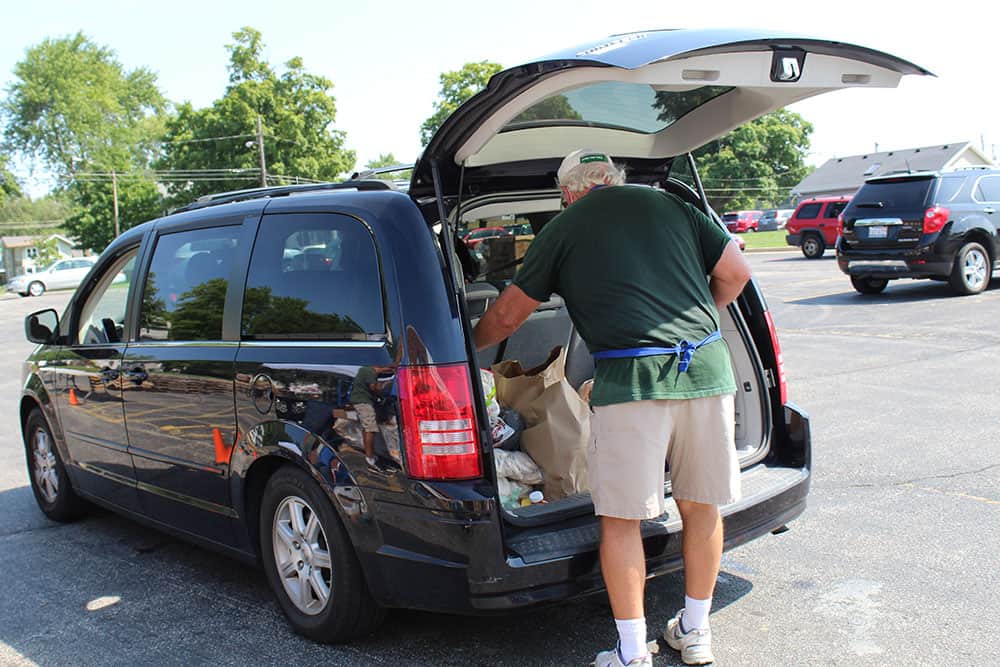
Volunteer numbers are down about 70 percent since March, said Tuite. “Usually we need 15-20 people each 3-hour shift on Mondays,” he said. They have had to turn away many volunteers to limit exposure for the 8-10 core volunteers needed to run the pantry.
And, donations are down. Tuite says a large source of revenue for the pantry – third Sunday offerings from Holy Trinity communion fund – have nearly dried up with most parishioners opting not to attend services in person.
The food pantry leadership will hold a special meeting soon to discuss ways to weather this storm, but Tuite is concerned. “If any of us go down with COVID, we’ll likely have to shut down the pantry,” he said with sadness in his voice.
If you would like to help fund more programs like this in the community, donate online to IPCF’s Annual Campaign which helps fund the General Grants.
